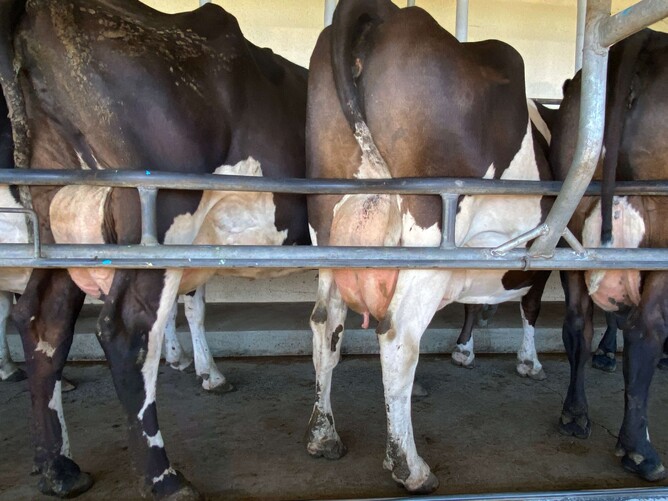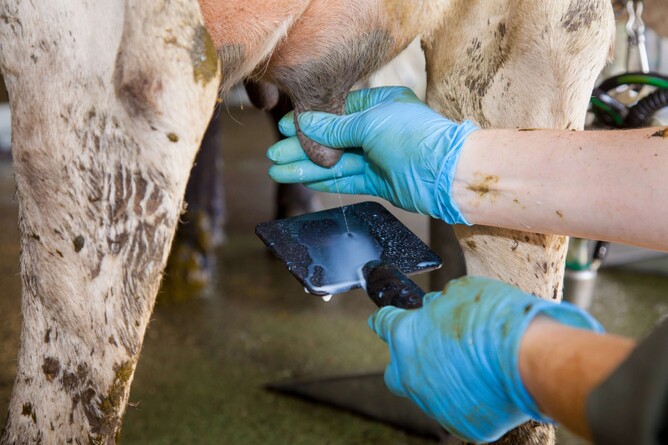Antibiotic use is under increased pressure because any time we use antibiotics there is an increased risk of bacteria developing resistance.
As we move away from blanket or whole herd treatment and towards more targeted approaches to support reducing antimicrobial resistance (AMR), what methods should we be using to determine which cows should receive what?
Identifying offenders
DCT should be reserved for cows with evidence of infection or if they fall into a high risk category. Evidence includes cows
- That have been treated for clinical mastitis
- Produced a positive bacterial culture
- Have a high somatic cell count (SCC)
- Or if they are an older cow producing high volumes
The latest research found that animals over four years old who were producing more than ten litres of milk at the last herd test were twice as likely to develop clinical mastitis during the dry period.
Use the maximum SCC value from herd testing. If a farm doesn’t herd test regularly a herd test within the last 80 days of lactation can be sufficient to determine if cows are infected or not. But if there isn’t any herd testing info a Rapid Mastitis Tests (RMT) performed immediately before drying off is a viable option.
SCC cut-points
The aim is to target as many cows as possible that are infected with a major bug. Use a threshold that will minimise how many infected cows that could be missed, as well as avoid giving antibiotics to uninfected cows. But there is no magic number for where the line should be drawn.
For example, research from DairyNZ and Cognosco showed when using greater than 150,000 as the SCC threshold, approximately 85 percent of the truly infected cows were identified and only 15 percent were missed.
If we increase the threshold we reduce the total amount of antibiotic required but we also risk missing a larger proportion of infected cows. And vice versa, when a lower threshold is used, more infected cows are captured but we also treat a larger number of uninfected cows.
The research also demonstrates as long as the cows below the threshold are treated with Internal Teat Sealants (ITS) there can still be good outcomes if they are infected cows. With less than two percent of cows developing clinical mastitis over the dry period and a bacterial cure rate of over 90 percent, these outcomes were equivalent to cows that had received DCT.
The rest of the herd
Unprotected cows have a high chance of developing an infection during the dry period with 9-13% new infection rates during studies. ITS provides an effective barrier to protect the udder against new infections over the dry period. And the data shows that compared to glands that received no treatment or DCT alone there can be a lower clinical mastitis incidence in the next lactaction if they receive ITS.
There are no hard and fast rules or exact ways of determining which cows should and shouldn’t receive DCT. Work with your vet to assess your farm when making the plan for drying off this season and have the confidence to look at options as we move away from a ‘one size fits all’ to a more targeted approach.



